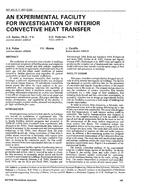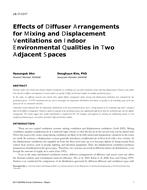The 2009 and 2012 International Energy Conservation Codes set the trend for significant improvements to the thermal performance of the building envelope. These new codes challenge building owners who desire large expanses of vision glass to utilize higher performance technologies. The implication of glazing ratio on glazing system U-factors and spandrel panel design will be presented, including a comparison of prescriptive versus performance-based approach to code compliance. Through a case study of a high-rise residential tower in the Pacific Northwest, this paper will present solutions involving both traditional glazing technology as well as emerging technologies that provide solutions that comply with one of the strictest energy codes in the nation. The paper is based on an analysis undertaken to quantify the impact of the glazing ratio on the design of a glazing system. Looking beyond code compliance, the effect of thermal bridging will be demonstrated using the latest 3D thermal modeling. The implications of raising the bar when comparing a code-compliant baseline building to the proposed building and its impact on LEED projects will be discussed. This will be of interest to designers looking to understand the implications of the restriction imposed on glazing ratio as well to the manufacturer of glazing systems looking to provide systems that meet these new requirements.
Presented at Thermal Performance of Exterior Envelopes of Whole Buildings XII, December 2013
Citation: Thermal Performance of Exterior Envelopes of Whole Buildings XII
Product Details
- Published:
- 2013
- Number of Pages:
- 9
- File Size:
- 1 file , 3.6 MB
- Product Code(s):
- D-BldConf13-41


